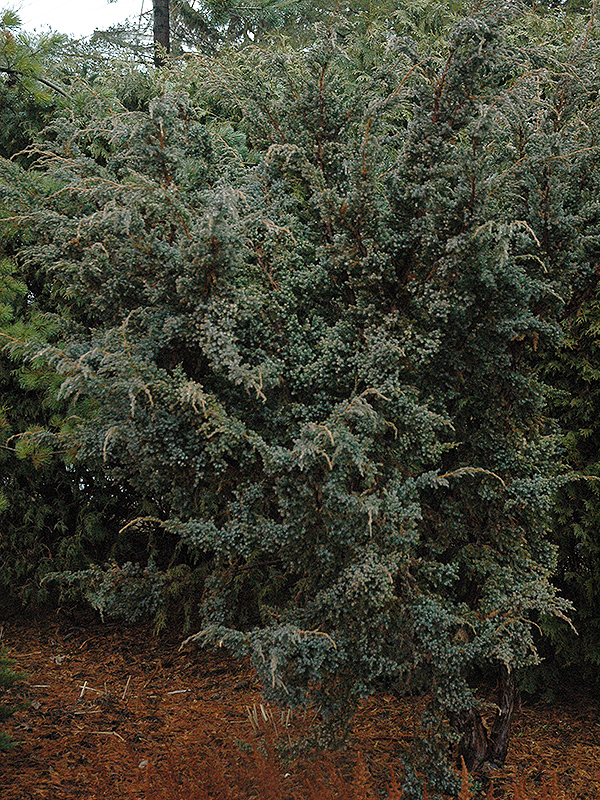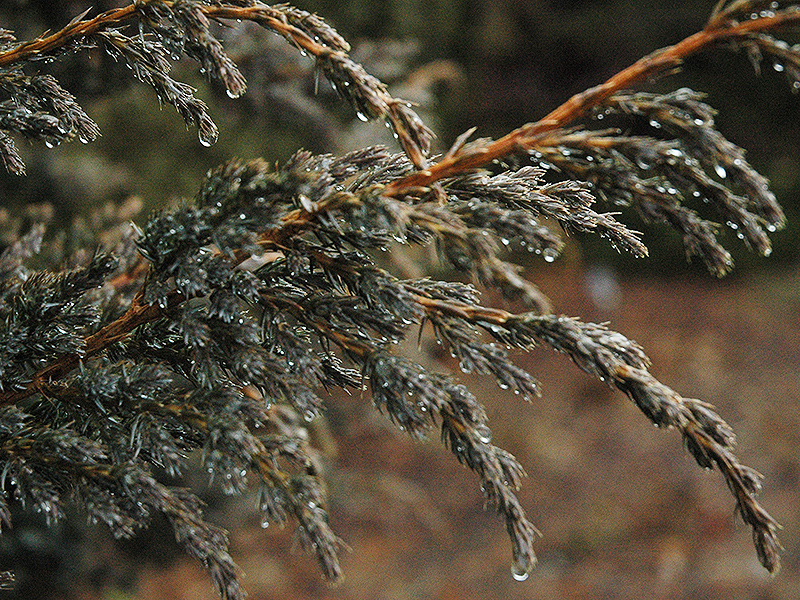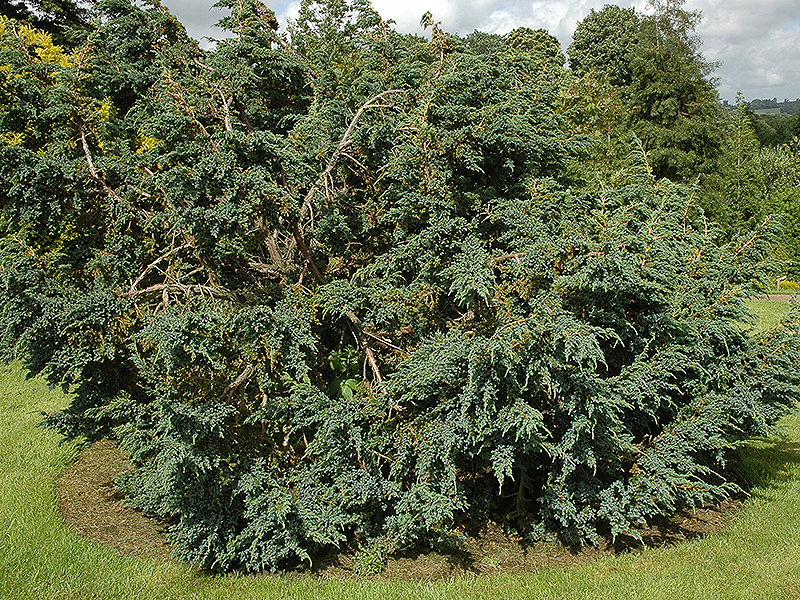| General Description | It is noted for its attractive 'steel-blue' foliage. Sadly, plant foliage tends to lose some of its ornamental interest over time because dead needles turn brown but remain on the plant. |
| Shape | Awl shaped with overlaping branches spreading outwards. |
| Landscape | For large areas where its sprawling form can spread. Could be used as a 'mass' plant in large landscapes. |
| Propagation | The seed Juniperus squamata requires a period of cold. The seed has a hard seedcoat and can take a very long time to germinate, requiring a cold period followed by a warm period and then another cold period. Soaking the seed for 3 - 6 seconds in boiling water may speed up the germination process. Meyeri is rooted by cuttings. |
| Cultivation | This plant prefers in well drained soils including sandy and chalky types. It requires full sun or part sun. Easy to grow since there is no need for pruning. |
| Pests | Aphids, bark beetles, blight, canker disease, caterpillar or looper, mites, nematodes, rust, and scale insects may |
| Habitat | Horticultural origin. |
| Bark/Stem Description | Bark has a rusty brown tinge and exfoliates in papery flakes. |
| Leaf Description | Leaves are greyish green to an almost steel blue colour, becoming bronze/purple in the winter time. Awl shaped 3-5mm long, prickly when palmed. |
| Flower Description | Flowers are dioecious. |
| Fruit Description | Cones are 50-60mm across, reddish brown colour changing to a purplish black colour. |
| Colour Description | Greenish grey colour with a purpleish bronze colour in the winter. |
| Texture Description | Medium. |


